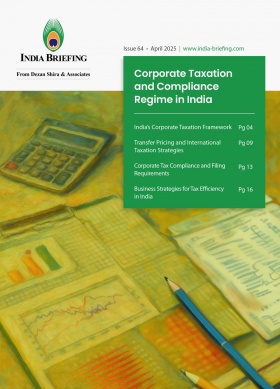Warming Ties: India-China Signal Trade and Diplomatic Reset
India-China are taking steps toward renewed economic and diplomatic engagement after years of strained relations. Discussions are underway to reopen border trade in locally manufactured goods, and both countries are preparing to resume direct passenger flights suspended since 2020.
On August 18, 2025, during his two-day visit to New Delhi, Chinese Foreign Minister Wang Yi emphasized that India and China should view each other as “partners.” He is scheduled to meet Prime Minister Narendra Modi on August 19.
India and China are moving toward normalizing relations as they agreed to resume direct flights, reopen border trade routes, encourage investment flows, and establish three new border-related mechanisms. The announcement, made on August 19, 2025, marks tangible progress in rebuilding ties after more than five years of strained relations caused by a prolonged border standoff.
This renewed momentum followed Chinese Foreign Minister Wang Yi’s visit to New Delhi on August 18–19, where he co-chaired the 24th round of the Special Representatives’ dialogue with India’s National Security Advisor Ajit Doval. During the visit, Prime Minister Narendra Modi confirmed his plan to meet President Xi Jinping in Tianjin on the sidelines of the Shanghai Cooperation Organisation (SCO) leaders’ summit scheduled for August 31–September 1.
On August 14, Bloomberg reported India and China are in discussions to resume border trade in locally manufactured goods, indicating a constructive development in bilateral relations after a prolonged period of strain. Both sides have put forward proposals to reopen designated trading points along their shared border.
Modi to visit China for SCO Summit amid renewed India-China engagement
Chinese Foreign Minister Wang Yi confirmed that the Indian Prime Minister will travel to China at the end of August to attend the Shanghai Cooperation Organisation (SCO) summit in Tianjin, scheduled for August 31–September 1. This will mark Modi’s first visit to China in seven years and is expected to include a meeting with President Xi Jinping on the sidelines.
Wang made the announcement during discussions with India’s National Security Advisor Ajit Doval, where both sides reviewed progress on the border issue. According to Wang, India-China relations are on a “steady course,” with the border situation showing signs of stabilization. He emphasized that as major neighbors and developing economies, India and China should strengthen trust, expand cooperation, and address specific issues through dialogue and negotiation.
Top outcomes of the discussion
- Both sides agreed to continue engagement through diplomatic and military channels. Modi called for a fair, reasonable, and mutually acceptable resolution to the boundary issue, emphasizing dialogue and peaceful negotiations.
- Modi welcomed the progress achieved since his last meeting with President Xi in 2024.
- India expressed readiness to work constructively with China in the lead-up to the upcoming SCO summit, signalling willingness to expand cooperation where possible.
- India-China have welcomed the resumption of the Kailash Manasarovar Yatra, underscoring civilizational ties between the two nations.
- India and China agreed to restart direct passenger flights and update the Air Services Agreement, making visa processes easier to promote trade, tourism, and cross-border engagement.
- Talks included plans to renew trade through key border passes such as Lipulekh, Shipki La, and Nathu La, which could expand economic opportunities and local connectivity.
Focus on the border and bilateral cooperation
Chinese Foreign Minister Wang Yi, during his two-day visit to New Delhi, emphasized that India and China should view each other as “partners”. His visit marks only the second high-level engagement between the two countries since 2020.
Wang held discussions with India’s External Affairs Minister S. Jaishankar on August 18, 2025, and is scheduled to meet Modi on August 19. He noted that India-China bilateral relations are now moving in a “positive trend” toward greater cooperation.
The visit also yielded tangible outcomes, with Wang assuring that China will resume the supply of critical commodities to India, including fertilizers, rare earth minerals, and tunnel boring machines (TBMs)—all of which are essential for India’s agriculture and infrastructure sectors.
The ongoing thaw in India-China relations comes against the backdrop of worsening ties between New Delhi and Washington. Earlier in August, US President Donald Trump imposed an additional 25 percent tariff on Indian imports, raising the overall tariff burden to 50 percent—the highest in Asia.
Global attention on India–China engagement in 2025
This warming of India–China relations comes as New Delhi faces challenges in its trade ties with the US. In August 2025, Washington raised tariffs on Indian exports to 25 percent—significantly higher than those applied to other regional economies, thereby complicating India’s external trade dynamics. The US has also threatened to impose an additional 25 percent tariff on India by August 21, 2025.
On August 8, 2025, Director-General of the Department of Asian Affairs at China’s Foreign Ministry, Liu Jinsong, met with India’s Ambassador to China, Pradeep Kumar, to discuss India-China relations. As reported, China’s Ministry of Foreign Affairs has conveyed its readiness to enhance communication and coordination with India on the issue, noting that border trade has traditionally played a significant role in supporting the livelihoods of communities in the frontier regions of both nations.
Anticipated resumption of direct passenger flights
According to reports, India and China are preparing to reinstate direct passenger flight services after a five-year suspension, a move expected to enhance trade, tourism, and broader economic engagement.
Before the suspension in 2020, bilateral air traffic was significant, with 816,000 passengers in FY 2019 and 770,000 passengers in FY 2020. By comparison, India–US passenger traffic was approximately 1.1 million in FY 2020. Cargo flows were also substantial, with 30,000 tonnes transported annually between India and China, versus 17,700 tonnes between India and the US. Since 2020, travelers and cargo operators have relied on indirect routes through Hong Kong, Thailand, and Singapore, which increased both transit time and costs.
The anticipated resumption of flights aligns with other signs of improving ties.
Restoring direct routes is expected to meet strong pre-pandemic demand for business and leisure travel, streamline cargo movement, and contribute to broader economic normalization. This step reflects a pragmatic effort to rebuild connectivity and cooperation while navigating ongoing geopolitical complexities.
Modi to visit China for the SCO Summit
Indian Prime Minister Narendra Modi is scheduled to visit Tianjin, China, on August 28, 2025, to attend the SCO Summit. The SCO is a regional grouping that promotes cooperation in security, trade, and political affairs, with members including China, Russia, and several Central Asian nations.
This visit marks Modi’s first trip to China since the 2020 military standoff in eastern Ladakh and is expected to be closely monitored for signs of a gradual thaw in bilateral relations.
The renewed diplomatic engagement builds on an understanding reached in October 2024, when Modi and Chinese President Xi Jinping met on the sidelines of the BRICS summit and agreed on restoring border peace.

Modi in a bilateral meeting with Xi Jinping on the sidelines of the 16th BRICS Summit at Kazan, in Russia, on October 23, 2024.
The continuation of this agreement has created space for higher-level interactions, making the upcoming visit a potentially significant moment in the trajectory of India–China relations.
READ MORE: End of India-China Border Standoff Signals Hope for Cross-Border Business Engagement
India-China trade activities over the year
Trading points between India and China were closed during the COVID-19 pandemic, coinciding with a sharp deterioration in bilateral ties following violent clashes in the Himalayas. The trade surplus is heavily skewed in China’s favor, with the deficit widening from US$44.03 billion in FY 2020–21 to US$99.20 billion in FY 2024–25.
|
Trade Relations Year-on-Year (Value in US$ Million) |
|||||
|
Trade activities |
2020-21 |
2021-22 |
2022-23 |
2023-24 |
2024-25 |
|
India’s exports to China |
21,187.15 |
21,259.79 |
15,306.10 |
16,658.91 |
14,252.10 |
|
% Growth |
– |
0.34 |
-28.00 |
8.84 |
-14.45 |
|
India’s imports from China |
65,212.25 |
94,570.57 |
98,505.77 |
101,735.76 |
113,456.63 |
|
% Growth |
– |
45.02 |
4.16 |
3.28 |
11.52 |
|
Total trade |
86,399.40 |
115,830.36 |
113,811.87 |
118,394.67 |
127,708.73 |
|
Trade balance |
-44,025.10 |
-73,310.78 |
-83,199.66 |
-85,076.85 |
-99,204.53 |
Source: Department of Commerce, Ministry of Commerce and Industry, GoI.
India’s exports to China have declined for two consecutive years, falling 14.45 percent in FY 2024–25 to US$14.25 billion. Major export categories such as iron ores and concentrates, unwrought aluminum, and granite registered steep declines.
|
India’s Exports to China (Value in US$ Million) |
|||
|
Commodity |
FY 2023-24 |
FY 2024-25 |
% Growth |
|
Iron ores and concentrates, including roasted iron pyrites, iron ores and concentrates, other than roasted iron |
3,635.94 |
1,885.18 |
-48.15 |
|
Unwrought aluminium |
329.01 |
204.71 |
-37.78 |
|
Fish frozen, excluding fish fillets and other fish meat of heading no. 0304 |
299.10 |
254.93 |
-14.77 |
|
Electrical apparatus for line telephony/telegraphy, including telephone sets with cordless handset carrier-current line system and videophones |
259.01 |
444.09 |
71.45 |
|
Pepper of the genus piper; dried or crushed or ground fruits of the genus capsicum or of the genus pimenta pep |
498.14 |
450.91 |
-9.48 |
|
Other fixed vegetable or microbial fats and oils (incl. jojoba oil) and their fractions, whether or not refined, but not chemically modified |
478.25 |
509.16 |
6.46 |
|
Flours, meals, and pellets of meat or meat offal, of fish or of crustaceans, molluscs or other aquatic invertebrates |
164.70 |
113.31 |
-31.20 |
|
Granite, porphyry, etc., and other monumental/building stone w/n roughly trimmed/merely cut into blocks/slabs of a rectangular shape |
365.69 |
302.49 |
-17.28 |
|
Petroleum oils and oils obtained from bituminous minerals other than crude propane, containing 70% or more by weight of these oils |
1,162.78 |
1,262.75 |
8.60 |
|
Cyclic hydrocarbons |
178.84 |
215.93 |
20.74 |
Source: Department of Commerce, Ministry of Commerce and Industry, GoI.
In terms of imports, India’s imports from China rose 11.52 percent in FY 2024–25 to US$113.46 billion, driven by strong growth in transmission shafts and bearings, air/vacuum pumps and compressors, and automatic data processing machines.
|
India’s Imports from China (Value in US$ Million) |
|||
|
Commodity |
FY 2023-24 |
FY 2024-25 |
% Growth |
|
Started acyclic monocarboxylic acids and their anhydrides, halides, peroxides, and peroxy acids; the halogenated, sulfated, nitrated/nitros |
546.61 |
602.81 |
10.28 |
|
Heterocyclic compounds with nitrogen |
2,551.96 |
1,759.75 |
-31.04 |
|
Antibiotics |
1,687.87 |
1,747.40 |
3.53 |
|
Mineral or chemical fertilizers containing two or three of the fertilizing elements — nitrogen (N), phosphorus (P), and potassium (K); other similar fertilizers in tablet form or similar packages. |
1,398.90 |
710.62 |
-49.20 |
|
Air/vacuum pumps, air/other gas compressors and fans; venting/recycling hoods incorporating a fan, whether or not fitted with filters |
1,242.02 |
1,475.20 |
18.77 |
|
Automatic data processing machines and units |
5,125.60 |
5,653.99 |
10.31 |
|
Electric accumulators, including separators, therefore within a rectangular |
2,508.53 |
2,565.88 |
2.29 |
|
Semiconductor devices (diodes, transistors, transducers); photosensitive semiconductor devices; photovoltaic cells, whether or not assembled in modules or panels; light-emitting diodes (LEDs). |
4,431.54 |
3,627.62 |
-18.14 |
|
Transmission shafts and cranks; gears; ball screws; bearing housing and other plain shaft bearings; speed changers, including torque converters |
795.56 |
963.35 |
21.09 |
|
Unrefined copper; copper anodes for electrolytic refining |
0.05 |
0.00 |
-99.99 |
Source: Department of Commerce, Ministry of Commerce and Industry, GoI.
India’s import profile from China remains dominated by high-value manufactured goods and technology components, while exports are concentrated in raw materials, agricultural products, and select industrial goods.
India’s manufacturing ambitions rely on Chinese supply chains for critical components such as electric vehicles, solar panels, and pharmaceutical inputs. Analysts believe this dependence may increase in the near term. Conversely, China is seeking to diversify its export markets amid the risk of reduced access to US consumers, with India’s vast domestic market presenting an attractive alternative.
Conclusion
Parallel moves to reopen border trade, restore direct flights, and engage at the highest political level signal a measured but meaningful thaw in India–China relations after years of tension. While structural trade imbalances persist, renewed dialogue and connectivity initiatives could lay the groundwork for broader economic cooperation. The upcoming SCO Summit in Tianjin will be a pivotal test of whether these steps translate into sustained trust-building and a more balanced partnership between the two Asian powers.
(This article was originally published on August 14, 2025. It was updated on August 20, 2025.)
About Us
India Briefing is one of five regional publications under the Asia Briefing brand. It is supported by Dezan Shira & Associates, a pan-Asia, multi-disciplinary professional services firm that assists foreign investors throughout Asia, including through offices in Delhi, Mumbai, and Bengaluru in India. Dezan Shira & Associates also maintains offices or has alliance partners assisting foreign investors in China, Hong Kong SAR, Vietnam, Indonesia, Singapore, Malaysia, Mongolia, Dubai (UAE), Japan, South Korea, Nepal, The Philippines, Sri Lanka, Thailand, Italy, Germany, Bangladesh, Australia, United States, and United Kingdom and Ireland.
For a complimentary subscription to India Briefing’s content products, please click here. For support with establishing a business in India or for assistance in analyzing and entering markets, please contact the firm at india@dezshira.com or visit our website at www.dezshira.com.
- Previous Article US Tariff Tracker: Strategic Implications for India’s US$48.2 Billion Exports
- Next Article India’s Emerging Enterprises: Charting the Next Decade of SME Growth









